Chart Color Schemes
est. as @ -- *
ABS ERP | -- people | --
2021 Census | -- people
Sales Activity
Curious about local property values? Filter the chart to assess the volume and appreciation (including resales) trends and regional comparisons, or scroll to the map below view this information at an individual property level.
Find a Recent Sale
Sales Detail
Population
An assessment of population growth drivers in Kingsford reveals an overall ranking slightly below national averages considering recent, and medium term trends
Kingsford's population was around 16,542 as of August 2025. This reflected an increase of 2,937 people from the 2021 Census figure of 13,605. The growth was inferred from ABS estimates and validated new addresses. As of June 2024, Kingsford's population was estimated at 16,380, with an additional 73 addresses since the Census date. This resulted in a population density ratio of 8,229 persons per square kilometer, placing Kingsford in the top 10% nationally for land demand. Kingsford's growth exceeded both state (6.4%) and SA4 region averages, driven primarily by overseas migration contributing approximately 96.6% of overall gains.
AreaSearch uses ABS/Geoscience Australia projections released in 2024 with a 2022 base year for covered areas, and NSW State Government's SA2 level projections released in 2022 with a 2021 base year for uncovered areas. Growth rates by age group are applied to all areas until 2041. Future trends project Kingsford's population increasing by 3,273 persons to 2041, a gain of 18.8% over the 17-year period.
Frequently Asked Questions - Population
Development
Residential development activity is lower than average in Kingsford according to AreaSearch's national comparison of local real estate markets
Kingsford averaged approximately 21 new dwelling approvals annually over the past five financial years, from FY-21 to FY-25, with a total of 107 homes approved. In FY-26, one home has been approved so far. On average, 6.6 new residents arrived per year for each dwelling constructed between FY-21 and FY-25.
This indicates that demand significantly exceeded new supply during this period. The average value of new dwellings developed was $979,000, suggesting a focus on the premium segment with upmarket properties. In the current financial year, there have been $13.7 million in commercial approvals, indicating moderate levels of commercial development. Compared to Greater Sydney, Kingsford has approximately half the rate of new dwelling approvals per person and ranks among the 11th percentile nationally, resulting in relatively constrained buyer choice and supporting interest in existing dwellings. This level is also lower than the national average, reflecting market maturity and possible development constraints.
New development consists of 30% standalone homes and 70% townhouses or apartments, demonstrating a trend towards denser development that appeals to downsizers, investors, and entry-level buyers. With around 1395 people per approval, Kingsford is a mature, established area. Looking ahead, Kingsford is projected to grow by 3,111 residents by 2041. At current development rates, housing supply may struggle to match population growth, potentially heightening buyer competition and supporting price increases.
Frequently Asked Questions - Development
Infrastructure
Kingsford has very high levels of nearby infrastructure activity, ranking in the top 20% nationally
Changes to local infrastructure significantly impact an area's performance. AreaSearch has identified 37 projects that may affect this region. Notable projects include UNSW Health Translation Hub, Sydney Children's Hospital Stage 1 and Minderoo Children's Comprehensive Cancer Centre, Mixed Use Development Kingsford, and 87-91 Middle Street Boarding House. The following list details those most likely to be relevant.
Professional plan users can use the search below to filter and access additional projects.
INFRASTRUCTURE SEARCH
 Denotes AI-based impression for illustrative purposes only, not to be taken as definitive under any circumstances. Please follow links and conduct other investigations from the project's source for actual imagery. Developers and project owners wishing us to use original imagery please Contact Us and we will do so.
Denotes AI-based impression for illustrative purposes only, not to be taken as definitive under any circumstances. Please follow links and conduct other investigations from the project's source for actual imagery. Developers and project owners wishing us to use original imagery please Contact Us and we will do so.
Frequently Asked Questions - Infrastructure
Sydney Metro Eastern Suburbs Extension
A strategic future extension of the Sydney Metro network (likely Metro West) to the south-eastern suburbs. Identified in the 'South East Sydney Transport Strategy' to 2056, the corridor proposes connecting the CBD/Hunter Street to Zetland (Green Square), Randwick, Maroubra, and La Perouse. The project aims to alleviate capacity constraints on the existing light rail and bus networks and support high-density residential growth in the Green Square precinct.
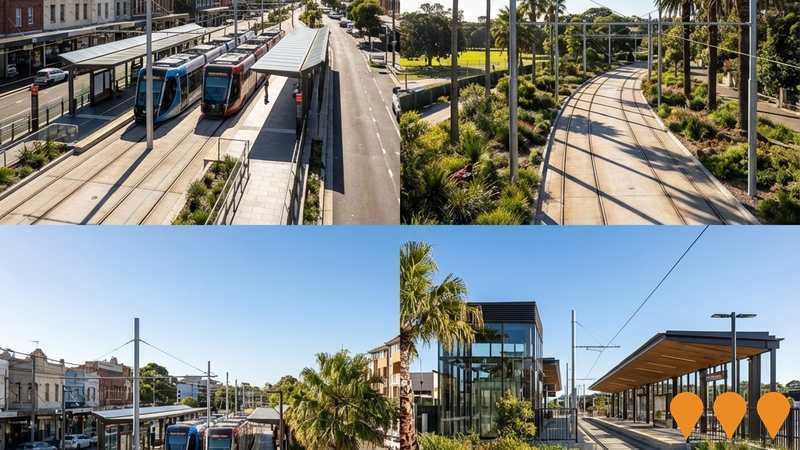
Randwick Health & Innovation Precinct
Australia's largest integrated health, education and research precinct. Combines the completed Prince of Wales Hospital Acute Services Building ($870M), the UNSW Health Translation Hub ($600M, 35,600sqm translational research and education building due late 2025/early 2026), and Sydney Children's Hospital Stage 1 & Minderoo Children's Comprehensive Cancer Centre ($658M, due late 2025). Total investment exceeds $2.1 billion. Co-locates UNSW Sydney, Prince of Wales Hospital, Sydney Children's Hospital, Royal Hospital for Women, nine medical research institutes and industry partners.
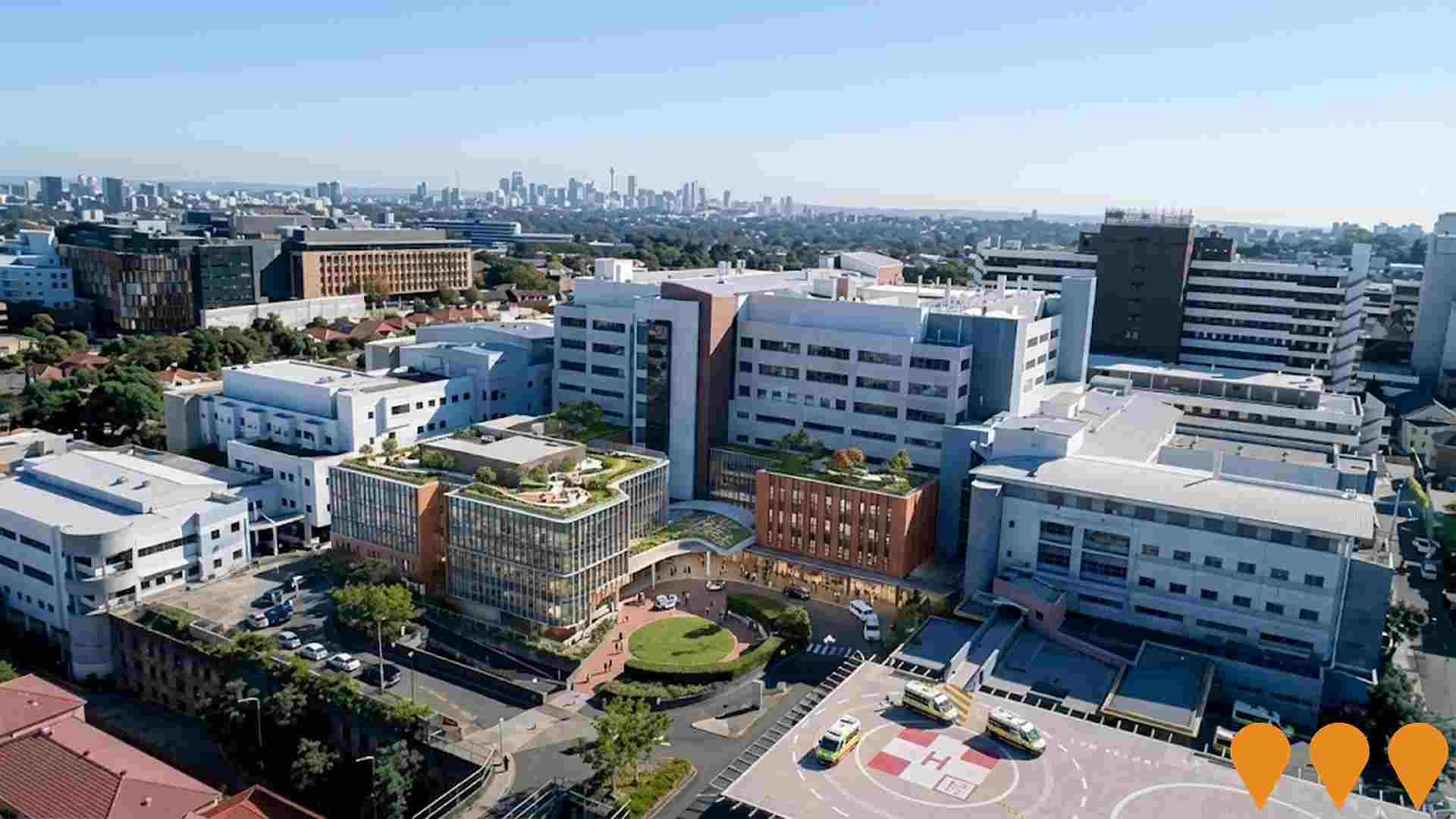
UNSW Health Translation Hub
$600 million, 15-storey, 35,600 square metre clinical education and research building bringing together educational and medical researchers, clinicians, industry partners and public health officials to drive excellence in health innovation and research translation. Designed by Architectus and developed by Plenary Health in partnership with UNSW, built by Hansen Yuncken. Features purpose-built spaces for researchers, educators, clinicians, and industry partners to accelerate medical breakthroughs and improve patient outcomes. Designed to achieve 6 Star Green Star rating - first in NSW under new scheme. Part of Randwick Health & Innovation Precinct. Construction complete, expected opening November 2025.
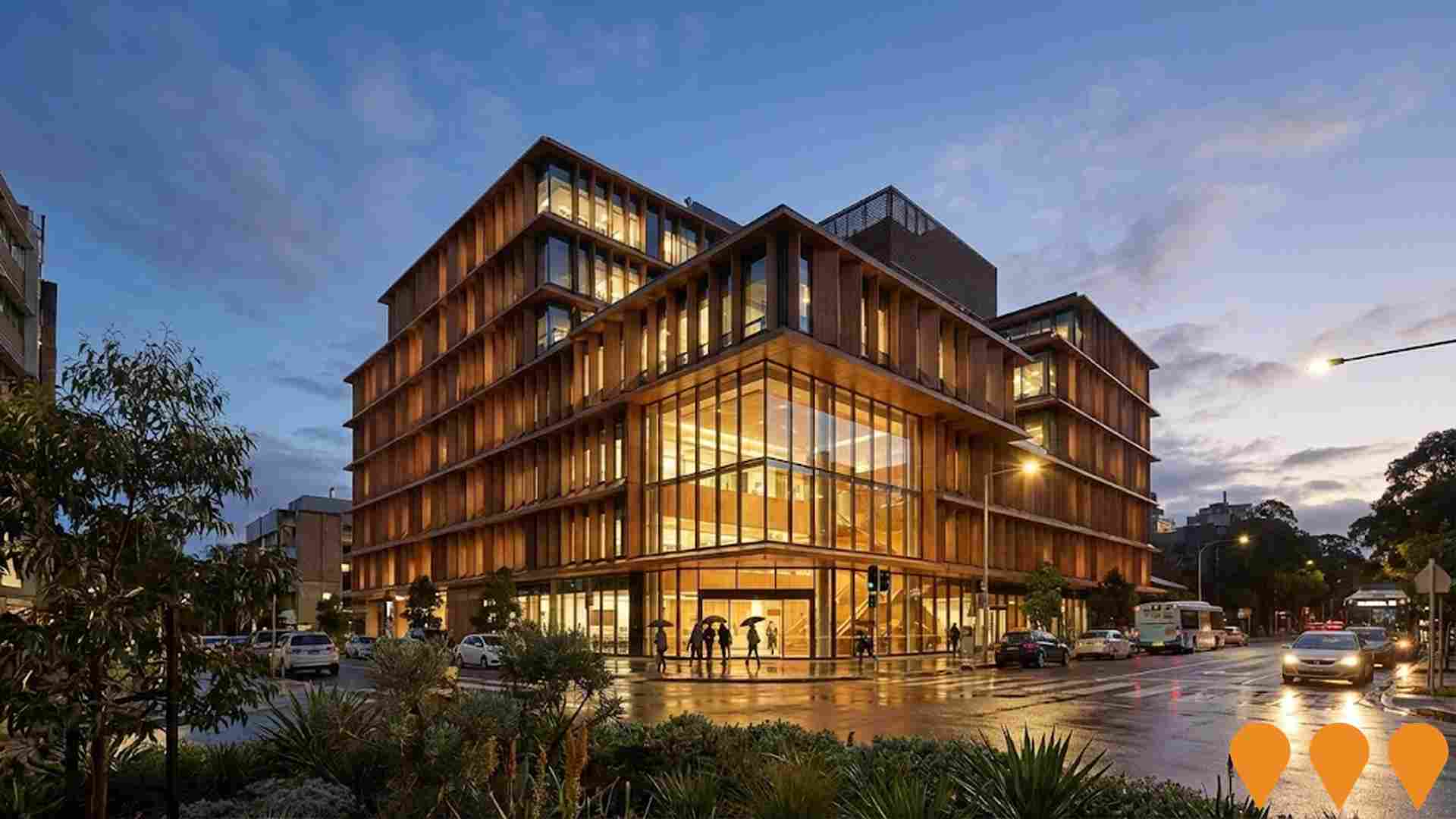
Sydney Children's Hospital Stage 1 & Minderoo Children's Comprehensive Cancer Centre
A $658 million redevelopment delivering a new 12-storey children's hospital and the Minderoo Children's Comprehensive Cancer Centre, integrating world-leading clinical care, research, and education. Features include 200 beds, expanded emergency department, neurosciences centre, and advanced paediatric cancer facilities. Construction is complete, with commissioning underway and opening to patients expected in late 2025.
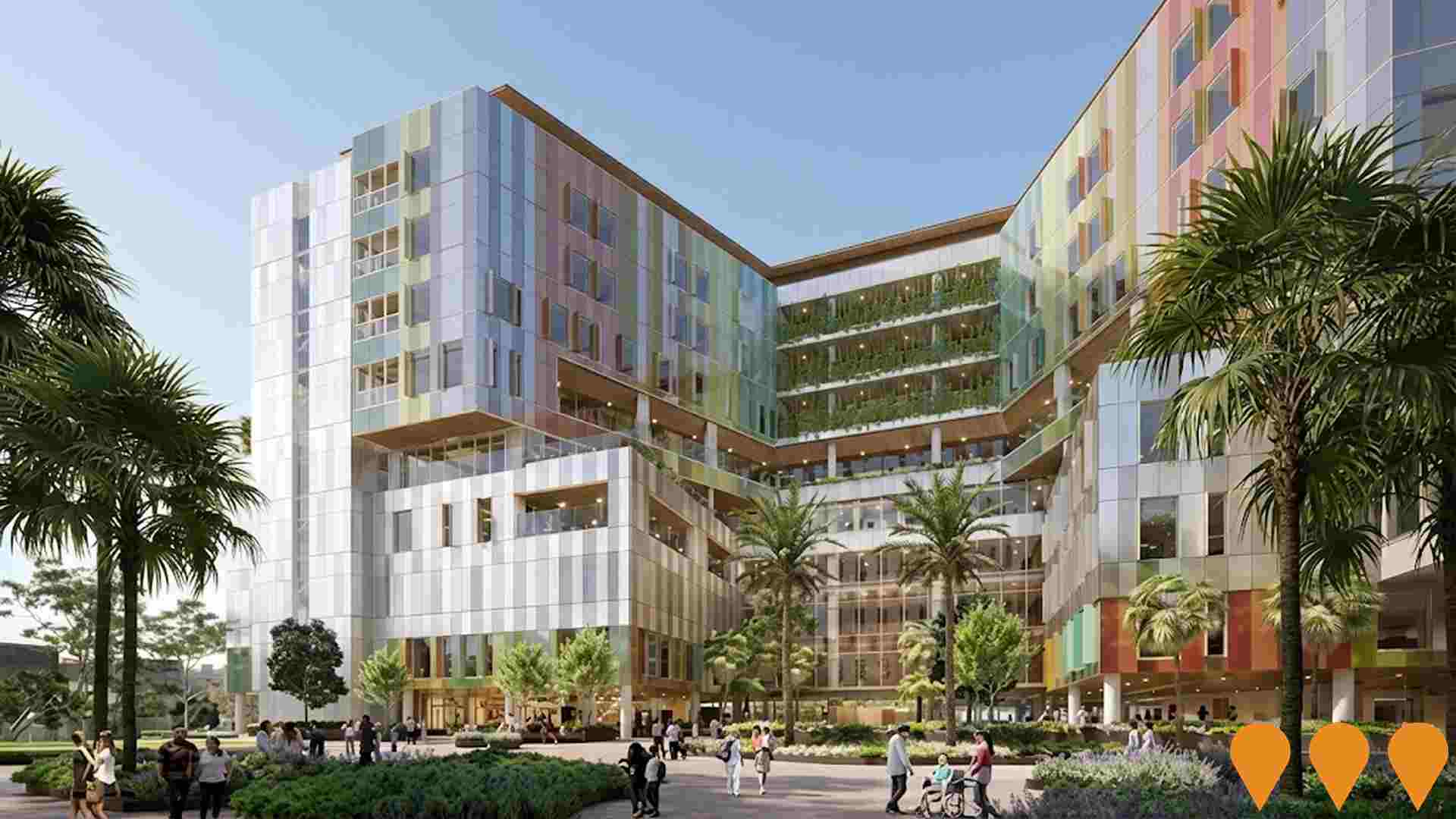
Prince of Wales Hospital Acute Services Building
The Prince of Wales Hospital Acute Services Building is a 13-storey, 55,000 square metre facility delivered as part of the Randwick Campus Redevelopment. It includes an expanded adult emergency department, intensive care unit, digital operating theatres, helipad, and additional inpatient beds. The building supports integrated health, research, and education within the Randwick Health and Innovation Precinct. Completed in 2022.

Eastlakes Live
Major urban renewal of the former Eastlakes Shopping Centre into a vibrant mixed-use precinct featuring a new town centre with Woolworths and Aldi supermarkets, specialty retail and dining, approximately 790 apartments across multiple buildings, significant public domain and green spaces.
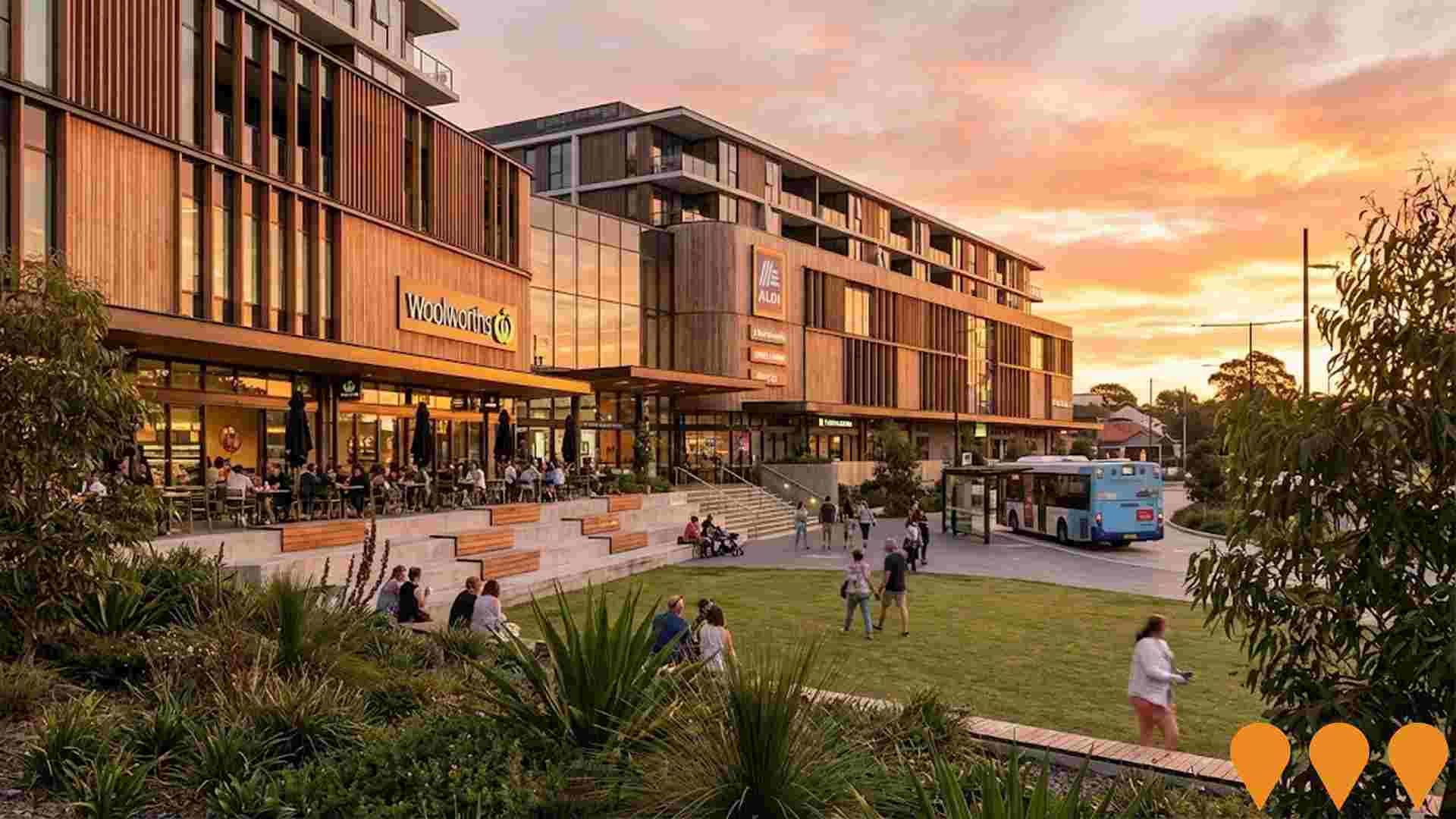
Mixed Use Development Kingsford
Integrated development proposing demolition and a mixed use scheme comprising three towers above a shared podium (approx. 9 to 14 storeys), with ground floor retail, a community facility and place of worship for Kingsford Church of Christ, and purpose built student accommodation. Planning Portal describes 532 co-living rooms; the developer describes about 674 beds across two main towers (14 and 9 storeys) above a podium with extensive communal amenity.

Newmarket Randwick
A comprehensive mixed-use masterplanned community by Cbus Property spanning 5.5 hectares providing 642 residential dwellings, 2,300sqm of retail dining precinct, and integrated public plaza with community facilities at the historic former Inglis Newmarket Stables site. Features multiple architectural collections including Newmarket Residences, Young & Fennelly, Jane St Terraces, and The Chiltern Collection. Stage 1 completed in 2021, Stage 2 under construction with completion due in 2025, Stage 3 under construction started in 2025.
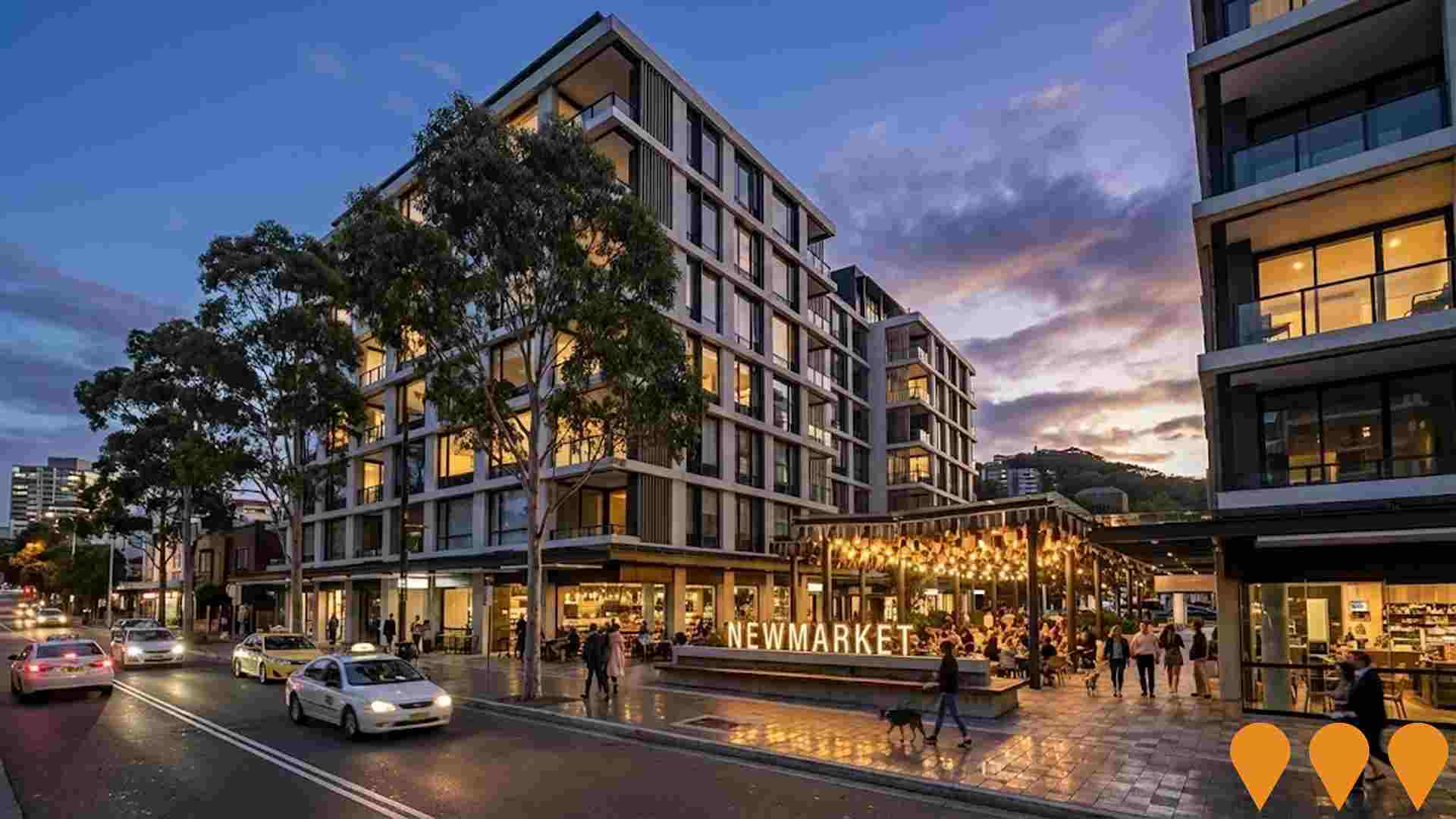
Employment
The employment landscape in Kingsford shows performance that lags behind national averages across key labour market indicators
Kingsford's workforce is highly educated with notable representation in the technology sector. The unemployment rate was 4.1% as of June 2025, which is 0.1% lower than Greater Sydney's rate of 4.2%.
Employment growth over the past year was estimated at 2.5%. There are 9,445 residents currently employed in Kingsford. The key industries of employment among residents are health care & social assistance, education & training, and professional & technical services. Education & training shows particularly strong specialization with an employment share of 1.6 times the regional level, while manufacturing has lower representation at 2.6% compared to the regional average of 5.7%.
The predominantly residential area appears to offer limited local employment opportunities based on Census data analysis. Between June 2024 and June 2025, employment levels increased by 2.5%, labour force increased by 2.4%, resulting in a decrease in unemployment rate by 0.1 percentage points. In contrast, Greater Sydney recorded employment growth of 2.6% with an increase in unemployment rate by 0.3 percentage points during the same period. Jobs and Skills Australia's national employment forecasts from May 2025 project national employment to expand by 6.6% over five years and 13.7% over ten years. Applying these projections to Kingsford's employment mix suggests local growth of approximately 7.2%% over five years and 14.5% over ten years, though this is a simple weighting extrapolation for illustrative purposes only.
Frequently Asked Questions - Employment
Income
Income levels align closely with national averages, indicating typical economic conditions for Australian communities according to AreaSearch analysis
AreaSearch's latest postcode level ATO data for financial year 2022 shows Kingsford's median income among taxpayers is $50,490. The average income in Kingsford during this period was $77,586. Nationally, these figures are exceptionally high compared to Greater Sydney's median of $56,994 and average of $80,856. By September 2025, based on a 12.61% Wage Price Index growth since financial year 2022, estimated incomes would be approximately $56,857 (median) and $87,370 (average). Census data indicates that household, family, and personal incomes in Kingsford are clustered around the 58th percentile nationally. Income distribution reveals that the largest segment comprises 28.4% earning between $1,500 to $2,999 weekly, with 4,697 residents falling into this category, mirroring patterns seen at regional levels where 30.9% occupy this income range. High housing costs consume 20.5% of income in Kingsford. Despite this, strong earnings place disposable income at the 53rd percentile nationally. The area's SEIFA income ranking places it in the 8th decile.
Frequently Asked Questions - Income
Housing
Kingsford features a more urban dwelling mix with significant apartment living, with a higher proportion of rental properties than the broader region
The dwelling structure in Kingsford, as per the latest Census, consisted of 36.3% houses and 63.7% other dwellings (semi-detached, apartments, 'other' dwellings). This compares to Sydney metro's 26.9% houses and 73.1% other dwellings. Home ownership in Kingsford stood at 27.7%, with mortgaged dwellings at 20.3% and rented dwellings at 52.0%. The median monthly mortgage repayment was $3,000, below the Sydney metro average of $3,033. The median weekly rent was $475, compared to Sydney metro's $550. Nationally, Kingsford's median monthly mortgage repayments were higher at $3,000 versus Australia's average of $1,863, and rents were substantially above the national figure of $375 at $475.
Frequently Asked Questions - Housing
Household Composition
Kingsford features high concentrations of group households, with a higher-than-average median household size
Family households constitute 59.9% of all households, including 28.4% couples with children, 21.1% couples without children, and 8.5% single parent families. Non-family households comprise the remaining 40.1%, with lone person households at 27.6% and group households making up 12.5%. The median household size is 2.5 people, larger than the Greater Sydney average of 2.4.
Frequently Asked Questions - Households
Local Schools & Education
Educational attainment in Kingsford aligns closely with national averages, showing typical qualification patterns and performance metrics
Educational attainment in Kingsford significantly exceeds broader benchmarks. 49.7% of residents aged 15+ hold university qualifications, compared to 30.4% nationally and 32.2% in NSW. Bachelor degrees are the most common at 29.7%, followed by postgraduate qualifications (17.6%) and graduate diplomas (2.4%). Vocational pathways account for 20.3% of qualifications among those aged 15+, with advanced diplomas at 9.4% and certificates at 10.9%.
Educational participation is high, with 37.0% of residents currently enrolled in formal education. This includes 16.2% in tertiary education, 7.2% in primary education, and 6.1% pursuing secondary education. St Spyridon College, Junior School Campus, located within Kingsford, had an enrollment of 0 students as of the latest data. The school focuses exclusively on primary education, with secondary options available in surrounding areas. No schools are located within Kingsford, requiring residents to travel for educational services. Note: where schools show 'n/a' for enrolments, please refer to parent campus details.
Frequently Asked Questions - Education
Schools Detail
Nearby Services & Amenities
Transport
Transport servicing is high compared to other areas nationally based on assessment of service frequency, route connectivity and accessibility
Kingsford has 49 active public transport stops. These include lightrail and bus services. There are 50 routes operating in total, providing 9,174 weekly passenger trips.
Residents have excellent accessibility to transport, with an average distance of 126 meters to the nearest stop. The service frequency is 1,310 trips per day across all routes, which equates to approximately 187 weekly trips per individual stop.
Frequently Asked Questions - Transport
Transport Stops Detail
Health
Kingsford's residents boast exceedingly positive health performance metrics with very low prevalence of common health conditions across all age groups
Kingsford demonstrates excellent health outcomes, with low prevalence of common conditions across all ages. Approximately 59% of its total population (9,726 people) has private health cover, compared to Greater Sydney's 70.6%.
Mental health issues and asthma are the most prevalent conditions, affecting 5.9% and 5.7% respectively. 78.4% of residents report no medical ailments, compared to 76.0% in Greater Sydney. Kingsford has 11.6% (1,913 people) aged 65 and over, lower than Greater Sydney's 15.1%. Seniors' health outcomes align with the general population's profile.
Frequently Asked Questions - Health
Cultural Diversity
Kingsford is among the most culturally diverse areas in the country based on AreaSearch assessment of a range of language and cultural background related metrics
Kingsford has a high level of cultural diversity, with 46.4% of its population speaking a language other than English at home and 51.4% born overseas. Christianity is the main religion in Kingsford, making up 46.8% of people residing there. Notably, Judaism is overrepresented in Kingsford compared to Greater Sydney, comprising 3.6% versus 4.4%.
The top three ancestry groups based on country of birth of parents are Other at 16.9%, Chinese at 16.7%, and English at 14.1%. These percentages differ significantly from the regional averages: Chinese is substantially higher (16.7% vs 7.8%), while English is notably lower (14.1% vs 20.3%). Other ethnic groups with notable divergences include Greek, which is overrepresented in Kingsford at 7.3% compared to 4.0% regionally, French at 1.1% versus 1.5%, and Russian at 0.7% versus 1.1%.
Frequently Asked Questions - Diversity
Age
Kingsford's young demographic places it in the bottom 15% of areas nationwide
Kingsford's median age is 31 years, which is lower than Greater Sydney's average of 37 and Australia's median of 38. Kingsford has a higher proportion of residents aged 15-24 (24.1%) compared to Greater Sydney but fewer residents aged 5-14 (7.2%), with the former being significantly higher than the national average of 12.5%. Between 2021 and now, younger residents have shifted Kingsford's median age down by 2.4 years to its current level. During this period, notable changes include an increase in the 15-24 age group from 17.4% to 24.1%, and a rise in the 25-34 cohort from 20.5% to 24.8%. Conversely, the 5-14 age group decreased from 9.4% to 7.2%, while the 45-54 group fell from 11.6% to 9.5%. Population forecasts for Kingsford in 2041 indicate significant demographic changes. The 25-34 age cohort is projected to grow by 719 people (an 18% increase) from 4,107 to 4,827 residents. Meanwhile, the 0-4 age group is expected to grow modestly by 9%, adding 53 people.

